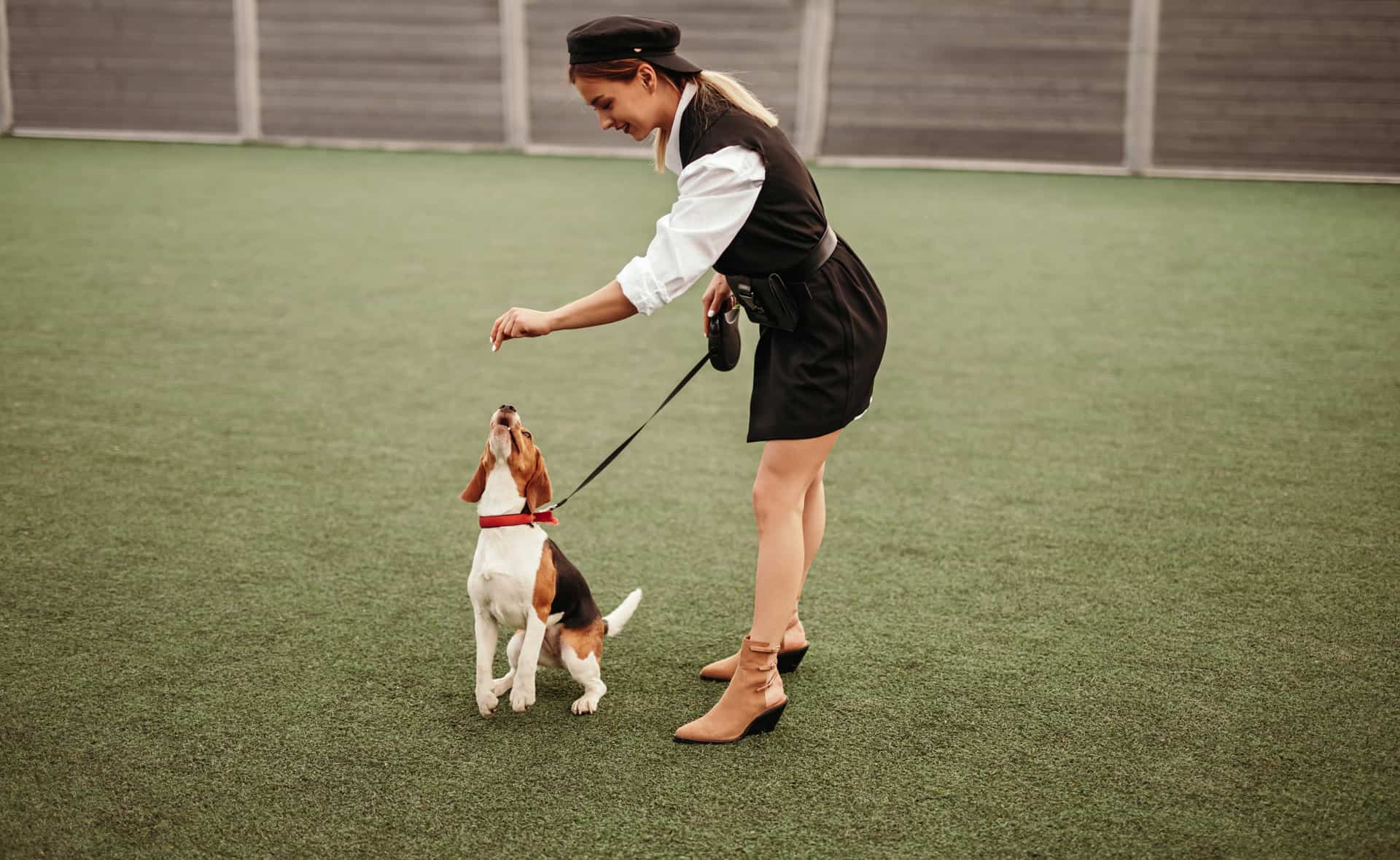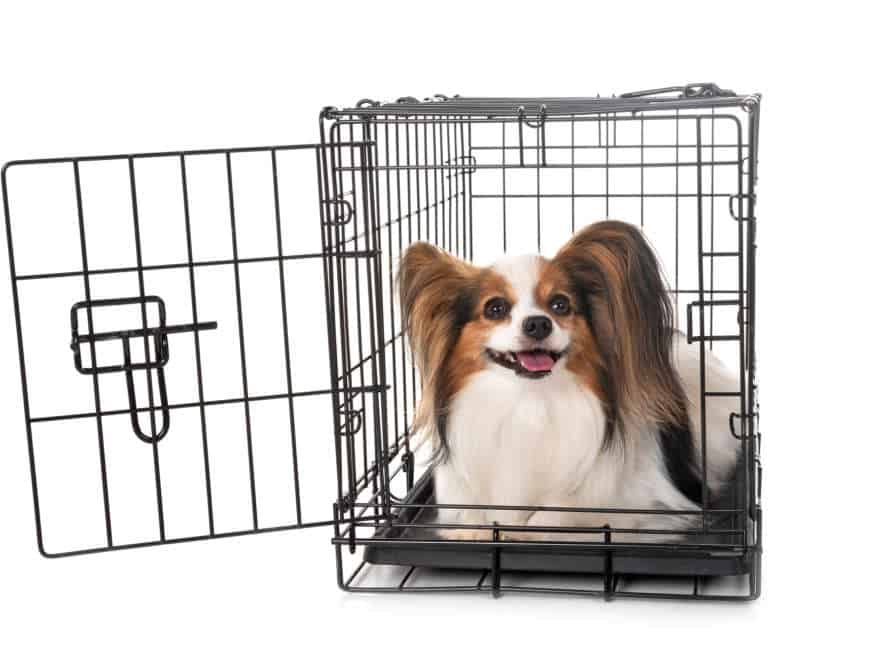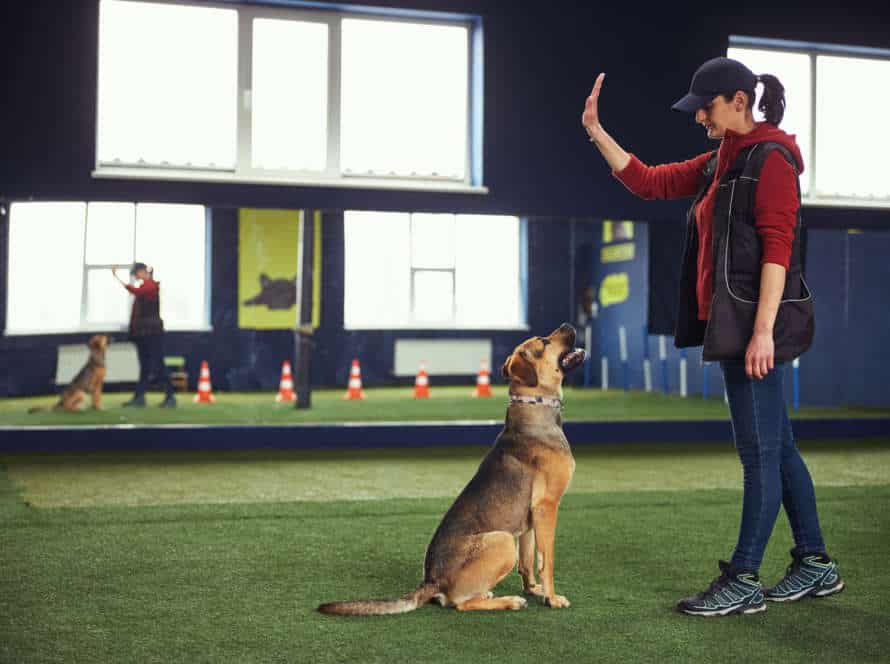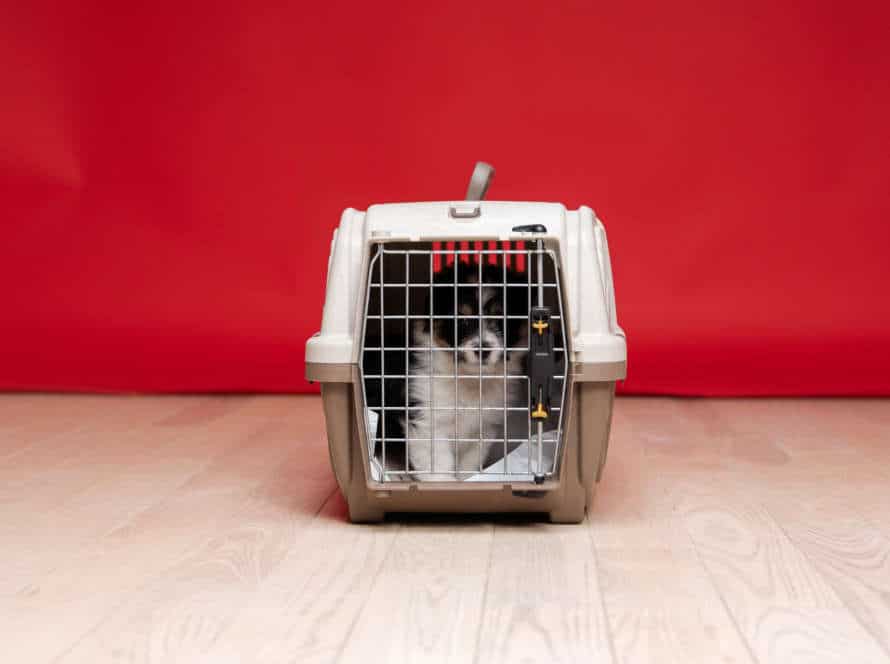The Role of Management in Reducing Leash Reactivity
Management is a must to lessen leash reactivity in dogs. Through environmental control, owners can reduce undesired behaviors on walks. Here’s how management helps:
- Exercise and mentally stimulate your dog prior to a walk.
- Select routes that avoid triggers.
- Use a front-clip harness to manage leash-pulling.
- Avoid scenarios where the dog may react.
- Reward calm behavior on walks with positive reinforcement.
These techniques can enable owners to have stress-free walks with their dogs. Pro Tip: Get professional help if your pup suffers from intense leash reactivity.
Understanding Leash Reactivity
Leash reactivity can be upsetting and aggravating for both pet owner and pup. Knowing why it occurs, and what techniques to use to decrease it, is critical. In this part, we will go over how management helps reduce leash reactivity in dogs and what to do about it.
What is leash reactivity?
Leash reactivity is a term that refers to a dog’s fearful or aggressive behavior when on a leash. This is a common issue among pet owners, and can be tough to manage. But it’s not impossible!
Management is key to reducing this behavior. This means avoiding situations that trigger the reaction, and practicing different behaviors. Here are some management strategies:
- Walk your dog in less crowded areas, to avoid confrontations with other dogs and people.
- Keep your dog on a short leash, and stay at a safe distance from potential triggers.
- Interrupt your dog’s attention by using commands he already knows and has been rewarded for before.
- Use positive reinforcement training to teach your pup alternative behaviors to the reactive ones.
With the right management and training, you can help your pooch overcome leash reactivity and have enjoyable walks together.
Identifying leash reactivity in your dog
It’s essential to spot leash reactivity in your pooch, to minimize stress and avoid dangerous scenarios during walks. Common clues that your dog may be leash reactive include barking, lunging, growling, or pulling hard on the leash when encountering other dogs or people.
Once you’ve identified leash reactivity, management is key to reducing and maybe overcoming it. Desensitization techniques can help, but don’t expect quick results. Here are some tried-and-true ways to manage leash reactivity:
- Skip walking your dog in busy areas.
- Increase the gap between your dog and potential triggers.
- Use a head halter or no-pull harness for more control.
- Reward good behavior with positive reinforcement.
- Get help from a pro trainer or behaviorist.
Understanding the causes of leash reactivity
Leash reactivity in dogs is a common issue. It shows up as aggressive behavior or over-excitement when on a leash. To address it, understand the cause. Possible reasons: improper socialization, physical abuse, health issues, fearful temperament, or lack of exercise.
To manage leash reactivity, avoid triggers and replace old habits with new positive ones. Get help from a trainer or use a no-pull harness. Remain calm and positive. This reduces stress and helps behaviour. Consistency and patience are key. Set small goals and reinforce positive habits, and minimize stress triggers.
How Management Can Help Reduce Leash Reactivity
Leash reactivity is common amongst many pets, and tough to control. Yet, with the right management, you can reduce or completely eradicate it. Management should be your top priority when tackling leash reactivity. Let’s explore how management can reduce this issue, and what you can do to make a positive difference.
Avoiding Triggers
Tackling leash reactivity in dogs can be tricky. But, managing it properly can help lessen its occurrence. It’s vital for pet owners and people who handle dogs to comprehend how management can diminish triggers for leash reactivity.
Here are some methods to reduce leash reactivity:
- Avoid crowded areas: Taking a reactive dog to high-traffic places and congested areas enhance the chances of coming across triggers. Choosing calmer routes while walking can decrease the possibilities of reactive behaviour.
- Keep a safe distance: Even when walking in less populated spots, staying away from triggers like people, other dogs, or certain objects can assist in preventing reactive behaviour.
- Shorten walks: Lowering the time spent walking can help in reducing leash reactivity.
Pro tip – If you know your dog reacts to other dogs, try taking him out for a walk in the early morning or late night when there are fewer dogs around.
Using a Front Clip Harness
A front clip harness can make walking with your pup more enjoyable! It attaches to the leash between their shoulders. Here are the advantages:
- Greater control – you can easily redirect their attention.
- Reduced pulling – they’ll stay beside you, not in front or behind.
- Reduced discomfort – collars and back clip harnesses can be painful and worsen leash reactivity.
A front clip harness can help manage leash reactivity, so your walks are always positive!
Changing Routes and Times of Walks
Management plays a vital role in managing leash reactivity in dogs. Changing routes and times of walks can create a secure atmosphere for your pet. Here’s how management can help:
- Change Routes: Take your dog for walks in different places. This can help reduce any frustration or anxiety due to familiar surroundings.
- Change Times: Walk your pup at times when there is less foot traffic. This reduces the chances of any unwanted encounters and makes it easier for your pet to stay calm.
- Use Tools: Utilize tools such as a front-clip harness, head collar, or a properly fitted flat collar. This ensures control and safety while on a walk.
Management allows your pet to adjust to the environment, improve focus, and evade potential stressful situations. In addition to management, early intervention training can decrease leash reactivity and make your furry pal enjoy their walk-time.
Reinforcing Positive Behaviors through Management Techniques
Leash reactivity can be a big bummer for pet and owner relationships. But, management techniques can help! These techniques can stop leash reactive behaviors in the short-term, and even help teach better behaviors over time.
Let’s look at these management techniques pet owners can use to reduce leash reactivity:
Positive Reinforcement Training
Positive reinforcement training is a good way to reduce leash reactivity in dogs. Instead of punishing unwanted behavior, it focuses on encouraging and rewarding desired behaviors.
Management techniques can help reinforce positive behavior.
Set your pup up for success by avoiding triggers that usually cause reactive responses.
Praise and reward them when they remain calm. Don’t punish or correct reactive behavior – it may make it worse.
High-value treats as reinforcements will help. Gradually decrease their frequency as your dog becomes more comfortable.
Be patient – progress may take time and effort. With consistent training, leash reactivity can be reduced and a better relationship between you and your furry friend can be fostered.
Treat and Train Method
The Treat and Train Method is an awesome way to make dogs behave better, especially when dealing with leash reactivity. Leash reactivity is when dogs pull or lunge while on the leash, which can be uncomfortable and dangerous.
Here’s how to use the Treat and Train Method:
- Spot what triggers your dog’s reactivity on the leash.
- Use a Treat and Train remote treat dispenser to reward good behaviour.
- Give them treats from the remote device when they react positively.
- Slowly increase the time between rewards during walks.
Repetition and patience will help reduce leash reactivity and build better relationships between you and your dog. Remember: Consistency is key when using the Treat and Train Method!
Teaching Alternative Behaviors
Teaching alternative behaviors is a great way to reinforce good habits and behavior in animals. Reducing leash reactivity in dogs can be assisted through the use of management techniques.
By teaching alternative behaviors, like sitting and focusing on the owner, the dog’s attention can be diverted away from triggers. A front-clip harness or avoiding areas of triggers can also be helpful.
When the dog does something good, it should be rewarded with treats, attention or playtime. Consistency and patience are necessary when teaching alternative behaviors and using management techniques. This will help improve the dog’s behavior and reduce leash reactivity.
The Importance of Consistent Management Strategies
Management is vital in reducing leash reactivity in pooches. When done regularly, it positively affects a dog’s behaviour and builds his confidence. It can also provide the basis for further training and hinder problematic behaviours from arising.
Here are some management tactics to check out:
How Consistency Can Help Reduce Reactivity
Consistency is key for curbing leash reactivity in dogs. Management strategies that are consistent give doggos a sense of safety, lessening the chances of reactive behavior when triggered.
Here’s how to apply consistent management strategies to reduce leash reactivity:
- Set boundaries and expectations that you follow through on.
- Make sure everyone who interacts with the pup uses the same strategies.
- Keep walks and other activities predictable.
- Reward good behavior consistently so your pup knows what’s expected and what gets them a reward.
In conclusion, be consistent to manage leash reactivity in dogs. Regularly using consistent management strategies will make for a happier relationship between pups and humans.
Common Management Mistakes to Avoid
To be an effective leader and create a content workforce, avoiding management mistakes is a must. Here are some key ones to watch out for:
- Micromanagement – Giving staff no freedom can cause a drop in morale and motivation.
- Communication issues – Setting expectations and giving feedback is a must. No communication leads to confusion and problems.
- Negativity – A negative attitude and reacting badly to errors can make the workplace hostile.
- Not recognizing achievement – Not noticing employees’ efforts can decrease morale.
In terms of reducing leash reactivity in dogs, consistent management strategies are vital. Maintaining leash length, exercise, and positive reinforcement training are key.
Tip: Open communication, staff autonomy, and recognizing hard work are essential for a successful manager and a pleased workplace. For managing leash-reactivity, consistency and positive reinforcement training are musts for a happy, well-trained pup on a leash.
Keeping Up with Training and Management Techniques Over Time.
To reduce leash reactivity in dogs, consistent management strategies are key. As a pet owner, you must stay abreast of training and management techniques to make sure your pup is safe and healthy.
Here are some strategies that can help with leash reactivity:
- Positive reinforcement training to promote good behavior.
- Keep walks brief and organized to reduce excitement.
- Avoid places with high foot traffic or other dogs until your dog is comfortable on walks.
- Use a well-fitting harness or head halter for more control over your pup’s movements.
- Consistently apply the management strategies to reinforce positive behavior over time. Proactively prepare for and dodge scenarios that could induce reactivity.
- Get advice from a professional dog trainer or behaviorist for tailored advice.
Patience and persistence are the keys to overcoming leash reactivity in dogs.
Frequently Asked Questions
Q: What is leash reactivity?
A: Leash reactivity is a dog’s overly excited or aggressive behavior when on a leash, typically directed towards other dogs or people.
Q: How can management reduce leash reactivity?
A: Management techniques such as avoiding trigger situations, increasing distance from triggers, and providing positive reinforcement can help reduce leash reactivity.
Q: What is the role of management in reducing leash reactivity?
A: Management plays a crucial role in reducing leash reactivity as it involves implementing strategies to avoid or minimize trigger situations and build positive associations for the dog.
Q: Can leash reactivity be completely eliminated?
A: While complete elimination may not be possible, proper management and training can significantly reduce the frequency and intensity of leash reactivity in dogs.
Q: What are some common mistakes owners make when trying to reduce leash reactivity?
A: Common mistakes include punishments or negative reinforcement, walking too close to triggers, and not providing proper socialization and training.
Q: When should professional help be sought for leash reactivity?
A: Professional help should be sought when the situation is beyond the owner’s expertise, the dog’s anxiety or aggression is severe, or if the owner is at risk of physical harm.







